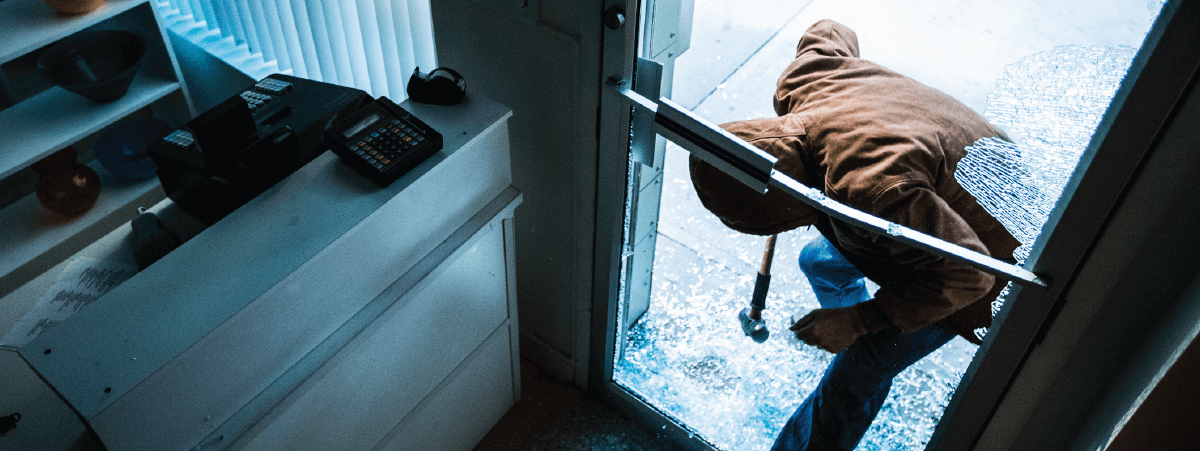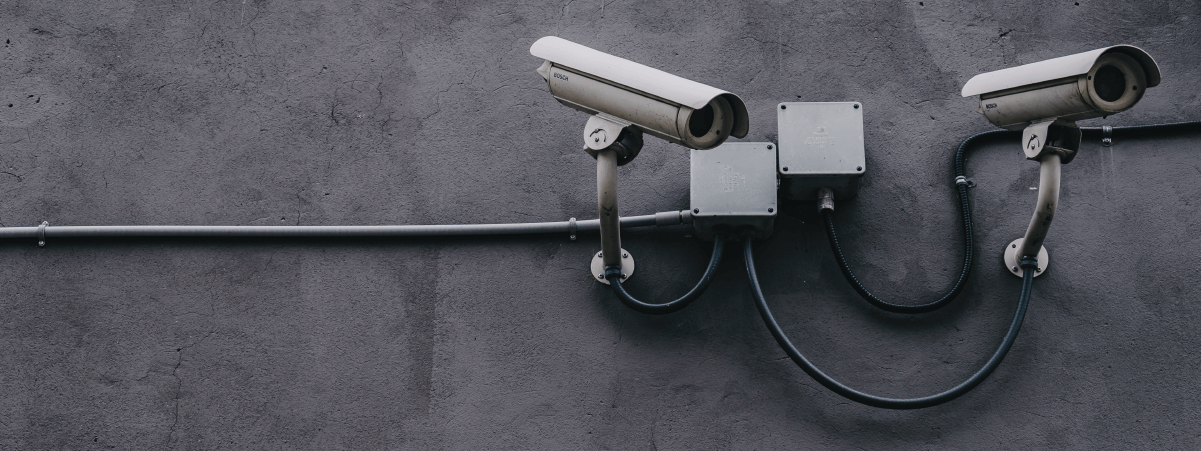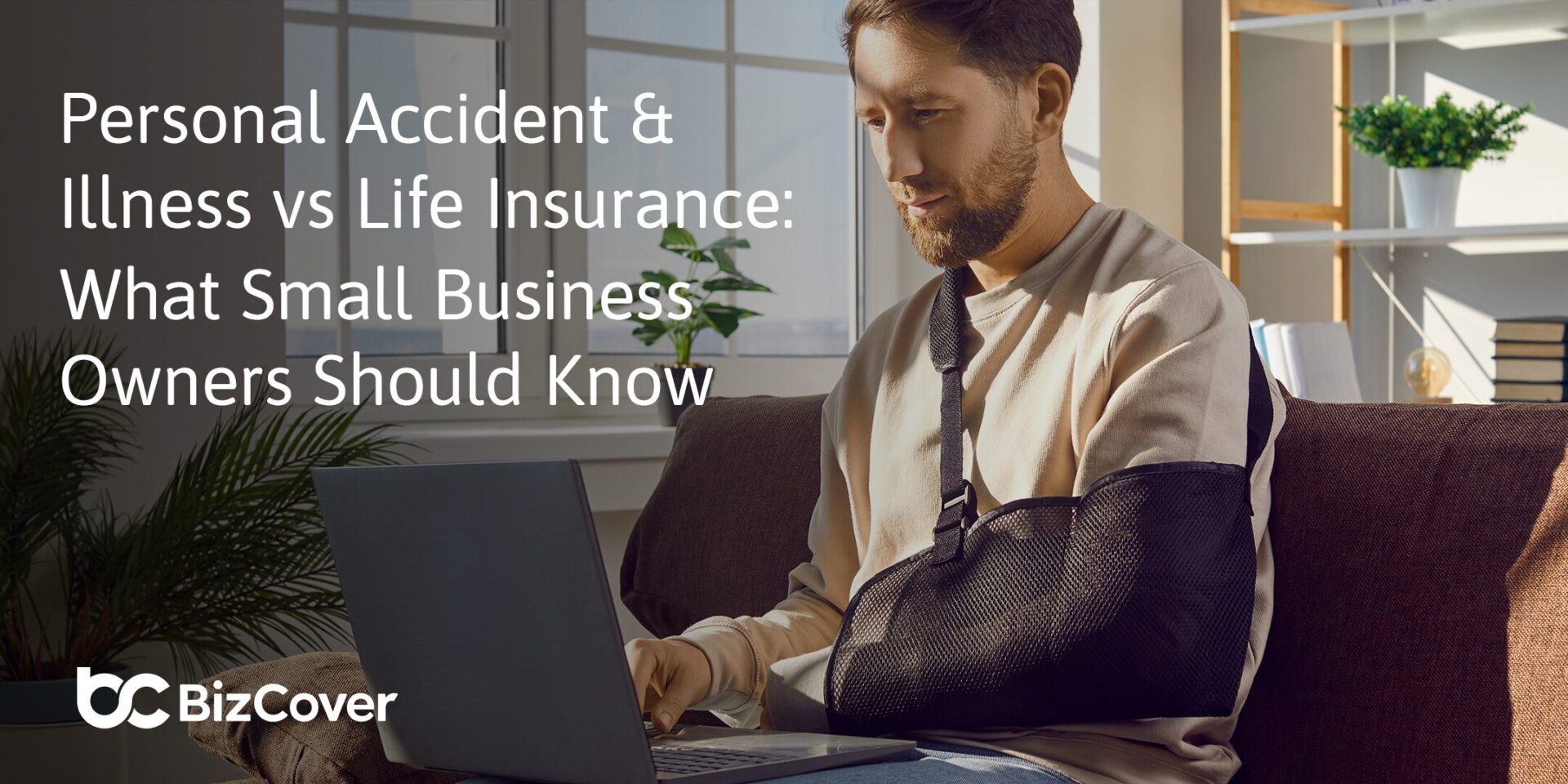Prevention & Protection – The Big Burglary Buffers
If you’ve ever arrived at your shop or store to find a smashed window or broken door, you’ll remember the sinking feeling and the despair that follows. Having your business burgled or robbed is a cruel mockery of the hard work you put in, and a costly one, but with the twin pillars of security (ie prevention) and insurance (ie protection), you can keep your business safe from harm and leave your mind free from worry.
Businesses under attack
Owning one of the two million small businesses in Australia can be a rewarding and sometimes lucrative endeavour, but the threat of theft and burglary is as present as it ever has been.
Commercial property break-ins are the most common form of burglary in the country and cost an average of $8,000 per event. Businesses are also about four times more likely to be broken into than homes, with retail outlets being the major victims of burglary and convenience stores bearing the brunt of robberies (1).
The reason businesses are targeted so heavily is the tempting risk/return ratio they offer. Whilst homes are often occupied and contain used goods of lesser value, shops and stores are generally unoccupied at night and stocked full of brand new goods and valuables, including electronics, tools and equipment. Homes often also have watchful neighbours to keep an eye out, and dogs that can sniff out a predatory presence better than any alarm system, which is great for protecting our homes and families but makes businesses the far more preferred option for thieves.
In today’s world, small shops and stores are seen as soft targets with rich pickings.
Stressing security
A tailored, robust security system should be the first line of defence for any small business owner. Security is about more than just locks and alarms, however, and needs to be thought of holistically to incorporate a number of contributing factors. Below are some of the more common things business owners can do to increase their on-site security. Not all of them will be appropriate for your business, but they will give you an idea of the security options available;
- Install a remotely controlled alarm system and display your security company’s sticker prominently.
- CCTV cameras are good, but be sure to store the footage offsite. If budgets are tight, fake cameras can be a deterrent.
- Central monitoring is expensive but effective; security guards or police showing up at your property is another good deterrent.
- Re-key your premises when you move in. Assume that all past owners and their cleaners have keys. You don’t need to change the locks, just the barrel, which should cost roughly $100 to $150 per door.
- Have a restricted key system, whereby the key can only be copied by a nominated locksmith who only cuts keys for nominated staff.
- Make sure locks and latches on every entry point are robust. Blocker plates on doors and grills on windows are an option in high crime-rate areas.
- Use shatterproof doors and windows or add security film and double floor bolts.
- Evaluate the landscape around your building and remove areas that people can hide behind, such as shrubs and signs.
Keep in mind that every security measure you take makes it less likely that criminals will choose your premises, and less likely that they’ll succeed in their efforts. You may be a target, but you don’t have to be an easy one.
As an added bonus, preventative steps you take to secure your business property against theft can also reduce your insurance costs considerably. Insurers appreciate the steps business owners take to lower their risk exposure and reward them accordingly. The other person who’ll welcome your efforts is your accountant, as security-related business costs are generally deemed to be operating expenses by the ATO and qualify as a tax deduction.
The insurance influence
Ultimately, every business with lock-up premises is vulnerable to break-in and even the most comprehensive security plans can be beaten. Here, Theft cover provides a safety net for small businesses and safeguards them against the financial hardship a break-in can cause. Prevention is smart, but protection is even smarter.
Theft cover is actually a type of business insurance and is usually purchased as part of a business ‘pack’ along with other insurances such as Public Liability. Even though it’s called ‘Theft’ cover, it’s not really designed to protect against shoplifting, fraud or even staff theft. The key condition most insurers have for these claims is a forcible and violent entry to the location, meaning that the theft needs to be a genuine break-in or robbery.
A few other scenarios are also covered, including theft consequent to unlawful concealment, assault (or the threat thereof), and breakage of locked showcases.
Your insurer will also consider a claim even if nothing was actually taken – burglary doesn’t have to include stolen property, only unlawful entry with the intent to commit a crime.
Getting covered – the hacks
Purchasing Theft cover is a relatively simple process, but there are a few things to look out for.
Your policy will usually list a few exclusions that you should be aware of, which commonly include tobacco products (unless listed), cash over a certain amount, vehicles (unless listed), and glass that isn’t stock. There may also be limits on items such as jewellery, meaning that you can only claim their value up to a certain amount. Check your PDS or ask your provider.
You should also confirm if your policy covers ‘actual cash value’, which includes the depreciated values of stolen items, or ‘replacement value’, which is the full value of market replacement cost. Replacement value will typically be more expensive, but offer the advantage of full replacement after a claim event. Again, check with your insurer.
Something else to consider when purchasing Theft cover is ‘Business Interruption’ insurance, which doesn’t cover the items stolen or the damage to your store but will cover the loss of income your business suffers if it’s unable to trade due to an insured event, which typically includes theft.
The wrap-up
Owners put too much into their small businesses to leave their stock and contents at the mercy of criminals, which is why security measures aimed at preventing burglary and theft are so important. But prevention is only half the story, as insurance is the real key to ensuring your business doesn’t suffer financially when a theft event occurs.
(1) http://www.insureon.com/insureonu/59-small-business-insurance-hacks/burglary-theft
This information is general only and does not take into account your objectives, financial situation or needs. It should not be relied upon as advice. As with any insurance, cover will be subject to the terms, conditions and exclusions contained in the policy wording or Product Disclosure Statement (available on our website). Please consider whether the advice is suitable for you before proceeding with any purchase. Target Market Determination document is also available (as applicable). © 2025 BizCover Pty Limited, all rights reserved. ABN 68 127 707 975; AFSL 501769.





